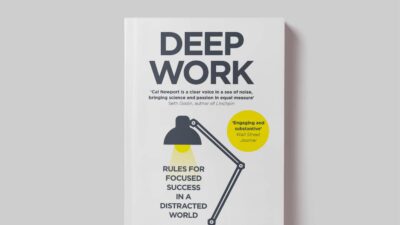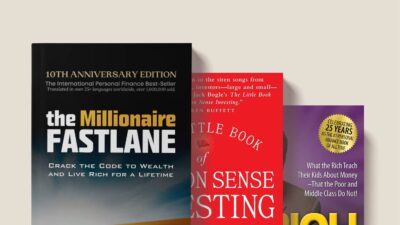In today’s fast-paced business environment, effective decision-making has become the cornerstone of successful leadership. Fortune 500 executives face countless decisions daily, from strategic investments to organizational restructuring, and the quality of these decisions often determines the difference between market leadership and obsolescence.
Research shows that the average adult makes approximately 35,000 decisions each day. For Fortune 500 leaders, this number can be significantly higher, and the stakes are considerably larger. A study by McKinsey revealed that organizations with strong decision-making practices are twice as likely to deliver above-median financial returns.
The Power of Structured Decision-Making
Before diving into specific frameworks, it’s essential to understand why structured approaches to decision-making matter. When leaders use proven frameworks, they:
- Reduce cognitive bias and emotional interference
- Create consistent, repeatable processes
- Improve team alignment and buy-in
- Document and learn from past decisions
- Scale decision-making across organizations
Furthermore, these frameworks provide a common language for teams to discuss and evaluate choices, leading to more transparent and effective leadership strategies.
Essential Decision-Making Frameworks
1. The Eisenhower Matrix
The Eisenhower Matrix, named after President Dwight D. Eisenhower, is a powerful framework that helps leaders distinguish between what requires immediate attention and what can be planned or delegated. This systematic approach transforms the overwhelming flood of daily tasks into manageable categories based on two key dimensions: urgency and importance.
Think of the matrix as a window with four panes, each representing a different combination of urgency and importance. When using this framework, leaders assess each task or decision by asking two questions: “Is this urgent?” and “Is this important?” Based on the answers, the task falls into one of four quadrants:
- Important and Urgent (Do First): These are crisis-level items that demand immediate attention, such as major customer escalations or critical system failures. Leaders tackle these tasks personally and immediately.
- Important but Not Urgent (Schedule): These are strategic activities that drive long-term success, like planning sessions, relationship building, and personal development. Leaders should block dedicated time for these to prevent them from becoming urgent.
- Urgent but Not Important (Delegate): These tasks need quick attention but don’t require the leader’s specific expertise. Examples include routine reports or standard operational issues. The key is to delegate these effectively while maintaining oversight.
- Neither Urgent nor Important (Eliminate): These activities, like excessive meetings or non-essential emails, often masquerade as work but don’t contribute meaningful value. Leaders should eliminate or minimize these to protect their time for more important matters.
The real power of this matrix lies in its ability to challenge our natural tendency to conflate urgency with importance. Many leaders fall into the trap of spending most of their time in the “urgent” quadrants, neglecting important but non-urgent activities that often have the greatest long-term impact.
Real-world application: When faced with multiple critical projects, Amazon’s leadership team uses this framework to prioritize initiatives, leading to successful launches like Amazon Prime and AWS while maintaining core operations.
2. SWOT Analysis
The SWOT Analysis framework is a comprehensive strategic planning tool that helps leaders evaluate their organization’s competitive position from both internal and external perspectives. This systematic approach examines four critical dimensions: Strengths, Weaknesses, Opportunities, and Threats.
Think of SWOT as taking a 360-degree photograph of your organization’s current position and future prospects. Here’s how each component works:
Strengths (Internal, Positive)
These are the internal capabilities that give your organization an advantage. Leaders examine factors like:
- Proprietary technology or intellectual property
- Strong brand recognition
- Efficient processes
- Talented workforce
- Financial resources
Weaknesses (Internal, Negative)
These are internal limitations that could hinder success. Leaders analyze areas such as:
- Outdated systems or processes
- Skills gaps in the workforce
- Limited resources
- Poor market position
- Inefficient operations
Opportunities (External, Positive)
These are external factors that could be leveraged for advantage:
- Emerging market trends
- Changes in regulations
- New technologies
- Competitor weaknesses
- Shifting customer needs
Threats (External, Negative)
These are external challenges that could pose risks:
- New competitors
- Changing regulations
- Economic downturns
- Shifting customer preferences
- Technological disruption
The power of SWOT lies in its ability to connect internal capabilities with external market realities. Leaders use this framework to identify where they can leverage strengths to capture opportunities while addressing weaknesses and mitigating threats.
Real-world application: Netflix used SWOT analysis to identify streaming as an opportunity while DVD rentals were still their primary business, leading to their successful digital transformation.
3. The 10/10/10 Rule
The 10/10/10 Rule, developed by business journalist Suzy Welch, is a practical framework that helps leaders make decisions by considering their consequences across three different time horizons. This method works by forcing decision-makers to step out of the immediate emotional context and evaluate choices through multiple time perspectives.
Here’s how to implement the 10/10/10 process:
Step 1: Define Your Decision Question
Start by clearly articulating the decision you need to make. For example: “Should we invest in expanding to a new market?” or “Should we restructure our organization?”
Step 2: Consider the 10-Minute Impact
Ask yourself: “How will I feel about this decision 10 minutes after making it?”
- Examine immediate consequences
- Consider short-term reactions from stakeholders
- Assess immediate operational impacts
- Evaluate immediate emotional responses
Step 3: Evaluate the 10-Month Impact
Ask: “How will this decision affect us 10 months from now?”
- Consider medium-term business implications
- Assess resource allocation effects
- Evaluate team dynamics and culture impact
- Analyze competitive positioning changes
Step 4: Project the 10-Year Impact
Ask: “What will be the consequences of this decision in 10 years?”
- Examine long-term strategic implications
- Consider market position effects
- Evaluate organizational capability development
- Assess sustainability and legacy impacts
Step 5: Balance the Three Time Frames
The final step involves weighing these different time perspectives against each other:
- Are short-term pains worth long-term gains?
- Do immediate benefits justify potential future risks?
- How do different stakeholders’ interests balance across time frames?
The power of this framework lies in its ability to break through emotional decision-making and short-term thinking. It helps leaders avoid making decisions based solely on immediate pressures or emotions by forcing consideration of longer-term implications.
Real-world application: Patagonia’s decision to prioritize environmental sustainability, even at the cost of short-term profits, was guided by this long-term perspective.
4. The Cynefin Framework
The Cynefin Framework, created by Dave Snowden, is a contextual decision-making tool that helps leaders recognize different types of situations and apply appropriate responses. The framework’s power lies in its ability to help leaders match their approach to the nature of the problem they’re facing.
Here’s how the framework works by categorizing situations into five domains:
1. Clear (Simple) Domain
- Characteristics: Clear cause-and-effect relationships, established best practices
- Decision Process: Sense → Categorize → Respond
- Example: Following standard operating procedures for routine tasks
- Appropriate Response: Use established best practices
2. Complicated Domain
- Characteristics: Multiple right answers exist, requires expertise to analyze
- Decision Process: Sense → Analyze → Respond
- Example: Engineering problems or market analysis
- Appropriate Response: Analyze options using expert knowledge
3. Complex Domain
- Characteristics: Cause and effect only clear in retrospect, unpredictable outcomes
- Decision Process: Probe → Sense → Respond
- Example: New market entry or cultural change initiatives
- Appropriate Response: Run safe-to-fail experiments, observe results, adapt
4. Chaotic Domain
- Characteristics: No clear cause-and-effect relationships, crisis situation
- Decision Process: Act → Sense → Respond
- Example: Crisis management, market crashes
- Appropriate Response: Take immediate action to establish order
5. Disorder (Center)
- Characteristics: Unclear which domain applies
- Decision Process: Gather more information to move to appropriate domain
- Example: Emerging situations with unclear parameters
- Appropriate Response: Break down situation into components
To use the framework effectively:
- Identify the Domain:
- Assess the situation’s predictability
- Evaluate cause-and-effect relationships
- Consider available expertise and known solutions
- Apply Appropriate Action Pattern:
- Clear: Apply best practices
- Complicated: Analyze with experts
- Complex: Experiment and learn
- Chaotic: Act decisively
- Disorder: Gather more information
- Monitor and Adapt:
- Watch for domain shifts
- Adjust responses accordingly
- Learn from outcomes
The framework’s true value comes from helping leaders avoid applying the wrong type of solution to a problem. For instance, trying to use best practices (Clear domain) in a Complex situation can lead to failure.
IBM’s former CEO Ginni Rometty used this framework to navigate the company’s transformation: “In today’s world, every business decision is a technology decision.”
During the COVID-19 pandemic, Pfizer used this framework to manage vaccine development, recognizing it as a complex challenge requiring emergent practices rather than traditional approaches.
5. RAPID Decision-Making
The RAPID framework provides a structured approach to clarifying decision-making roles in organizations. This method assigns five key roles in the decision process: Recommend, Agree, Perform, Input, and Decide. Here’s how it works:
Recommend: These individuals analyze the situation and propose solutions. They gather data, consider alternatives, and make a formal recommendation.
Agree: These stakeholders have veto power and must approve the recommendation before it moves forward. They ensure the decision aligns with legal, financial, and operational requirements.
Perform: These team members implement the decision once it’s made. They need to be consulted to ensure the solution is practical and achievable.
Input: These people provide relevant information and insights but don’t have veto power. Their expertise helps shape the recommendation.
Decide: This person makes the final decision, considering the recommendation and input from others.
Google uses a modified version of RAPID to maintain agility despite its size, enabling quick decisions on product launches and updates.
6. The OODA Loop
The OODA Loop (Observe, Orient, Decide, Act) is a dynamic decision-making process that emphasizes speed and adaptability. Originally developed for military combat operations, it’s now used in business for competitive situations.
The process flows through four stages:
1. Act: Implement the decision and observe its effects
2. Observe: Gather information about the situation
3. Orient: Analyze the information through various lenses (experience, cultural traditions, new information)
4. Decide: Choose a course of action based on the analysis
Tesla uses this framework to rapidly iterate on vehicle designs and manufacturing processes, maintaining its lead in the electric vehicle market.
7. The Pareto Principle
Also known as the 80/20 Rule, states that roughly 80% of effects come from 20% of causes. In business decision-making, this principle helps leaders focus on the most impactful areas. For example:
- 80% of profits often come from 20% of customers
- 80% of complaints come from 20% of customers
- 80% of sales come from 20% of products
Leaders use this framework to prioritize resources and attention on the vital few rather than the trivial many.
Jamie Dimon of JPMorgan Chase applies this principle to resource allocation: “You have to focus on what really moves the needle in your business.”
The principle helps identify:
- Key customers
- Critical products
- Essential processes
- Core markets
Microsoft applied this principle to bug fixing, focusing on the 20% of bugs that caused 80% of crashes, dramatically improving software stability.
8. The Decision Matrix
The Decision Matrix (also known as the Pugh Matrix) helps leaders evaluate options against weighted criteria. This framework is particularly useful for complex decisions with multiple variables.
Indra Nooyi, former CEO of PepsiCo, used this approach for product development decisions: “The key is to set realistic customer expectations, and then not to just meet them, but to exceed them.”
Steps include:
- List all options
- Identify criteria
- Weight criteria
- Score options
- Calculate weighted scores
Real-world application: Intel uses decision matrices to evaluate new manufacturing site locations, considering factors like infrastructure, talent pool, and government incentives.
9. The Six Thinking Hats
Developed by Edward de Bono, the Six Thinking Hats framework helps leaders and teams examine decisions from multiple perspectives:
- White Hat: Facts and data
- Red Hat: Emotions and intuition
- Black Hat: Potential problems
- Yellow Hat: Benefits and opportunities
- Green Hat: Creativity and alternatives
- Blue Hat: Process management
Satya Nadella emphasizes the importance of multiple perspectives: “Diverse perspectives are not just nice to have, they’re essential for innovation.”
Real-world application: Disney uses this framework in their creative process, ensuring all aspects of new attractions are thoroughly considered.
10. The WRAP Method
Outlined in “Decisive” by Chip and Dan Heath, the WRAP Method provides a systematic approach to decision-making:
- Widen your options
- Reality-test your assumptions
- Attain distance before deciding
- Prepare to be wrong
Alan Mulally, former CEO of Ford, credits structured decision-making for the company’s turnaround: “You have to trust the process.”
Real-world application: Starbucks used this framework when deciding to close stores for racial bias training, considering multiple options and testing assumptions before making the decision.
11. The Ladder of Inference
This framework, developed by Chris Argyris, helps leaders understand how they reach conclusions and make decisions. It’s particularly useful for avoiding snap judgments and bias.
The ladder includes:
- Observable data
- Selected data
- Added meaning
- Assumptions made
- Conclusions drawn
- Beliefs adopted
- Actions taken
Howard Schultz, former Starbucks CEO, emphasizes the importance of careful reasoning: “In many cases, success is built on a thousand small decisions made with conviction and faith.”
Real-world application: Johnson & Johnson uses this framework to evaluate product safety concerns, ensuring decisions are based on facts rather than assumptions.
Key Takeaways
After examining these frameworks used by Fortune 500 leaders, several crucial lessons emerge:
- Structured Approaches Win: Successful leaders rarely make important decisions by gut feel alone. They use frameworks to ensure thoroughness and consistency.
- Context Matters: Different situations require different frameworks. The key is knowing which tool to use when.
- Speed vs. Accuracy: Some frameworks prioritize speed (OODA Loop), while others emphasize accuracy (Decision Matrix). Leaders must balance these based on the situation.
- Inclusive Decision-Making: Many frameworks incorporate multiple perspectives and stakeholders, leading to better outcomes.
- Learning Integration: The best frameworks include mechanisms for learning from past decisions and improving future ones.
Conclusion
In today’s complex business environment, effective decision-making is more crucial than ever. These frameworks, tested and proven by Fortune 500 leaders, provide valuable tools for approaching decisions systematically and thoughtfully.
Remember that frameworks are guides, not rigid rules. The most successful leaders adapt these tools to their specific contexts and combine them as needed. As you face your next important decision, consider which of these frameworks might help you approach it more effectively.
The key to success isn’t just making good decisions – it’s having a reliable process for making those decisions consistently. By incorporating these frameworks into your leadership toolkit, you’ll be better equipped to navigate the challenges and opportunities that lie ahead.
Start small, perhaps with one framework that resonates with your current challenges, and gradually expand your repertoire as you become more comfortable with structured decision-making. The investment in learning and applying these frameworks will pay dividends in better, faster, and more confident decision-making throughout your career.


